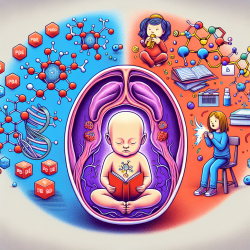Introduction
In the realm of child development, understanding the environmental factors that can influence cognitive and behavioral outcomes is crucial. Recent research has highlighted the potential impact of prenatal exposure to polybrominated diphenyl ethers (PBDEs) and polychlorinated biphenyls (PCBs) on children's neurodevelopment. This blog delves into the findings of the study titled "Prenatal PBDE and PCB Exposures and Reading, Cognition, and Externalizing Behavior in Children," which examines these associations.
Key Findings
The study conducted by Zhang et al. (2017) involved 239 mother-child pairs and assessed the impact of prenatal PBDE and PCB exposures on children's reading skills, intelligence quotient (IQ), and externalizing behavior problems. The researchers found that:
- An increase in prenatal PBDE concentrations was inversely associated with reading skills and Full-Scale Intelligence Quotient (FSIQ) at age 8.
- Higher PBDE exposure was linked to increased externalizing behavior problems.
- No significant associations were found between prenatal PCB concentrations and the assessed cognitive and behavioral outcomes.
Implications for Practitioners
For practitioners working with children, these findings underscore the importance of considering environmental exposures in the prenatal period. Here are some ways practitioners can apply these insights:
- Awareness and Education: Educate parents and caregivers about potential environmental risks during pregnancy, emphasizing the importance of minimizing exposure to harmful chemicals.
- Early Assessment: Incorporate early developmental screenings that consider environmental exposure histories as part of comprehensive assessments for children.
- Intervention Strategies: Develop intervention programs that address potential cognitive and behavioral challenges associated with prenatal exposures.
Encouraging Further Research
While this study provides valuable insights, it also highlights the need for further research. Future studies could explore:
- The mechanisms by which PBDEs affect neurodevelopment, potentially involving oxidative stress and disruption of calcium homeostasis.
- Longitudinal impacts of prenatal exposures on other cognitive domains and behavioral outcomes beyond age 8.
- Potential protective factors that could mitigate the adverse effects of these exposures.
Conclusion
Understanding the impact of prenatal environmental exposures on child development is essential for creating effective interventions and support systems. By integrating these findings into practice, practitioners can better support children's developmental trajectories and advocate for safer environmental policies.
To read the original research paper, please follow this link: Prenatal PBDE and PCB Exposures and Reading, Cognition, and Externalizing Behavior in Children.










